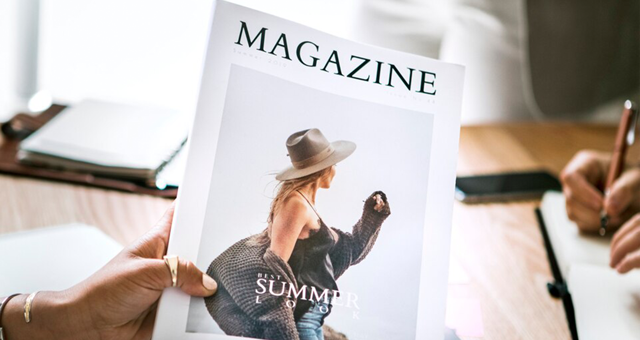Print Design
From business cards and brochures to posters and banners, we offer comprehensive print design services that ensure your marketing materials stand out from the crowd. Our attention to detail and understanding of print production processes guarantee high-quality designs that make a lasting impact.
- Business Cards:
- Business cards are small, portable pieces of printed material that contain essential contact information about a person or business. When designing business cards, it's crucial to create a design that accurately reflects your brand identity. This includes incorporating your logo, choosing appropriate colors and fonts, and ensuring the layout is clean and organized. Additionally, you can add creative elements or finishes like embossing, foiling, or spot UV to make your business cards visually appealing and memorable. The goal is to create a professional and visually striking business card that leaves a positive impression on the recipient and helps them remember your brand.
- Brochures:
- Brochures are versatile marketing materials used to provide detailed information about products, services, or events. When designing brochures, it's important to consider the target audience and the purpose of the brochure. The design should be visually appealing, with a clear hierarchy of information, appropriate use of images and graphics, and a cohesive layout that guides the reader's eye. Effective brochure design involves a balance between text and visuals, ensuring the content is easily readable and engaging. Attention to typography, color schemes, and overall branding consistency is also vital to maintain a professional and cohesive look.
- Posters:
- Posters are designed to grab attention and convey a message in a concise and visually impactful way. Whether used for advertising, promoting an event, or conveying information, poster design requires careful consideration of the target audience and the desired outcome. Key elements of effective poster design include bold and eye-catching visuals, concise and compelling text, a clear hierarchy of information, and a balanced layout that draws attention to the main message. Colors, typography, and imagery should all work together to create a visually striking poster that communicates the intended message effectively.
- Banners:
- Banners are large-format printed materials typically used for advertising or displaying messages at events, trade shows, or public spaces. Banner design should focus on creating a visually captivating and easily readable design that grabs attention from a distance. This includes using bold typography, vibrant colors, and high-resolution images or graphics. Clear and concise messaging is crucial, ensuring that the main message is easily understood by viewers passing by. Attention should also be given to the banner's size, ensuring the design elements are appropriately scaled and proportioned for maximum impact.
- Flyers:
- Flyers are single-page printed materials used for promoting events, sales, or special offers. Flyer design should be attention-grabbing and informative, providing enough information to generate interest without overwhelming the reader. Key design considerations include a visually appealing layout with a clear hierarchy of information, attention-grabbing headlines or titles, concise and compelling copy, and high-quality visuals that complement the message. Effective use of color, typography, and imagery helps create a cohesive and engaging design that captures the reader's attention and encourages them to take action.
- Packaging Design:
- Packaging design involves creating visually appealing and functional designs for product packaging. It plays a crucial role in attracting customers and communicating brand identity. When designing packaging, considerations include choosing appropriate packaging materials, creating a visually striking design that stands out on the shelves, and incorporating branding elements like logos, colors, and typography. Packaging design should also consider practical aspects such as ease of use, product protection, and compliance with labeling requirements. Effective packaging design enhances the overall product experience and contributes to brand recognition and customer loyalty.
- Print Advertising:
- Print advertising refers to designing advertisements for print media, such as newspapers, magazines, or outdoor billboards. Print ads should be visually compelling, effectively communicate the intended message, and stand out among other advertisements. Key elements of print advertising design include attention-grabbing headlines or taglines, persuasive copywriting, visually appealing imagery or graphics, and a clear call to action. Consistency with branding elements is crucial to maintain brand recognition. Effective print advertising design captures the reader's attention, creates interest, and motivates them to take the desired action, such as making a purchase or visiting a store.



